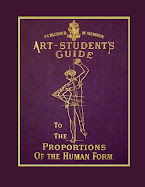


Engravings from Anatomia, Ex Caspari Bartholini Parentis Institutionibus, Omniumque Recentiorum & Propriis Observationibus Tertium ad Sanguinis Circulationem Reformata, by Thomas Bartholin, published in 1666.
This book is one Bartholin had been working on since 1641 to update his father's classic work with new discoveries.
Bartholin was a Dutch Anatomist who discovered the lymphatic system. Wikipedia Article.
Other blog posts about anatomy.




Thomas Bartholin's engravings at Ebay.com.

Thomas Bartholini's entire 1655 anatomy book, Anatomia Reformata Ebay.com.
Anatomia, Ex Caspari Bartholini Parentis Institutionibus, Omniumque Recentiorum & Propriis Observationibus Tertium ad Sanguinis Circulationem Reformata.


Partial biography from History and bibliography of anatomic illustration in its relation to anatomic science and the graphic arts
By Ludwig Choulant, Mortimer Frank, Fielding Hudson Garrison, Edward Clark Streeter
Published by The University of Chicago press, 1852
THOMAS BARTHOLINUS
Thomas Bartholinus, born at Copenhagen, October 20, 1616, was the son of the Danish anatomist Caspar Bartholinus senior and studied in Copenhagen. From 1637 on, he traveled through Holland, visited Paris and Montpellier, then Padua, where he remained three years, and after this Italy, Sicily, and Matta. In 1645, he received his doctor's degree at Basel. In Copenhagen, he first became professor of anatomy, which position he held until he retired in 1661 to live on his country estate, Hagested. In 1670, Hagested, with his library and his manuscripts, was destroyed by fire. He died on December 4, 1680. Having a broad education and a good knowledge of the Greek and Arabic languages, and being an ardent student of history and archaeology, he took an active part in the anatomic and physiologic labors and discoveries of his time, particularly in the discovery of the lymphatics. He was also actively interested in pathologic anatomy, and was extraordinarily productive as an author. In line with our present discussion belongs only his very much-used anatomic textbook, in reality, a revision of his father's Institutiones anatomicae (published in Viteberg, 1611, 8°), under the title:
Caspari Bartholini Institutiones anatomicae auctae ab auctoris filio Thoma Bartholino, Lugd. Batav., a pud Franc. Hackium, 1641, 8°.
In a short time, many other editions were published in German. French, Italian, Dutch, and English. Among the Italian was one in verse.
Many illustrations have been added, differing in the various editions, but few of them original. Most of these are after Vesalius, Casserius, Vesling, Bauhin, Ruysch, and others; a great many are taken from monographs, such as Stensen, Regner de Graaf, Franciscus Sylvius, Folius, and from writings on the lymphatics, a branch of anatomic research to which the author's original works especially belong.
The workmanship on the copper engravings is unequal, but for a compendium, is on the whole commendable. The illustrations of the brain by Sylvius appear for the first time in the edition of 1641 drawn by Sylvius himself and engraved by J. Voort-Kamp, whose name is given on three plates.

Anatomy for Artists: A New Approach to Discovering, Learning and Remembering the Body

Human Anatomy for Artists
















Thank you for your blog
ReplyDeleteBest Regards
Rita V.
Thank you, I like your drawings.
ReplyDelete:-)
ReplyDeletethank u
i will try 2 have billingual text
Rita V.